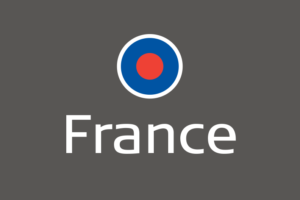France: Healthcare: Compliance: What will change with 100% reimbursement of optical appliances?
 Asinta thanks Gerep, its Partner in France, for providing this information.
Asinta thanks Gerep, its Partner in France, for providing this information.
After some particularly grueling negotiations with the optical industry, the Minister of Health published in the Official Gazette1 a series of new measures and regulations clinched with the industry. The target announced for 2020 is to do away with people’s reluctance to seek treatment by offering a complete range of optical appliances with no co-pay. How is this to be leveraged?
The basic idea: a basket of treatments with prices capped
The “zero co-pay” idea for optical appliances, as elsewhere, is based initially on composing a basket of services at controlled pricing. In the area of lenses, so-called “class A” appliances group together around a hundred references covering the whole range of sight disorders. Each reference has a price cap effective from January 1, 2020. A class A spherical single–vision lens (0 to -2 correction) will cost a maximum of €32.50. The maximum price for progressive lenses will range from €75 to €170. Opticians will be obliged to stock class A products but a free market will persist for references known as class B.
The situation for frames will be simpler because the “zero co-pay” price has been set at €30. Opticians will be obliged to offer at least 17 models in different colors. Customers will continue to have the possibility to take “zero co-pay” lenses and mount them in freely-priced frames.
For a complete “zero co-pay” appliance, two lenses plus frame, the maximum price will be between €95 and €370. People will be able to benefit from this scheme once every two years, just as today.
Interaction between “responsible” policies and first-tier health insurance
Complementary healthcare insurance schemes will bear the burden of arriving at “zero co-pay.” They will have to offer the “100% healthcare” basket with the new controlled prices as part of responsible policy cover. However, the upper limit on responsible policies could well be slightly reduced. For example, it seems likely that the maximum cover for refunding frames will come down from €150 to €100.
The final agreement also demands a significant effort from the first-tier health insurance scheme on “zero co-pay” or class A. For example the basic rate on which Social Security refunds will be based amounts to €14.25 on the price of single–vision (-4 to -6) lenses which will be capped at €47.50. This means tier one health insurance will refund €8.55 (60% of €14.25) i.e. 18% of the total outlay. On the other hand, Social Security reimbursements on non-controlled pricing will be limited to…€0.33!
In summary, basic products will be reimbursed 100% whilst upmarket items, or those outside the compulsory basket, will leave insureds with higher co-pays.
Optical retailers are in a weak position
How will insureds behave when faced with these new criteria? This question is haunting the entire optical appliance sector. The real cost of the reform for tier one and tier two health insurance and for device manufacturers and opticians will depend on how much people will be prepared to alter their choices to take advantage of “zero co-pay” appliances. The industry is afraid that their margins will be eroded. They will still be able to catch up by billing 100% reimbursement services. This is something that finally gives the optician recognition as a health practitioner. On the contrary, there would not seem to be any consolation for French optical frame manufacturers. The new upper reimbursement limits would seem to exclude them, de facto, from the “100% healthcare” basket and categorize their products as fashion accessories.
What about the insureds in all this?
The target of offering insureds a complete “zero co-pay” range would appear to be nearing achievement…provided one makes do with the basic range of products. The main thrust of the reform comes out as creating visibility for the cheaper solutions that existed already and exercising price control. The theory is, treatments for all at controlled prices! In practice, the crucial issue will be the information given to insureds, and the clarity given to optical appliance offerings and complementary health insurance schemes.
According to the health ministry’s latest press release the start date for the “100% healthcare” basket for optical treatments is set for January 1, 2020. The measures set out above are an endorsement of the practitioner networks advocated by Gerep to offer a wider and better quality range of “zero co-pay” appliances than those imposed by Social Security.
